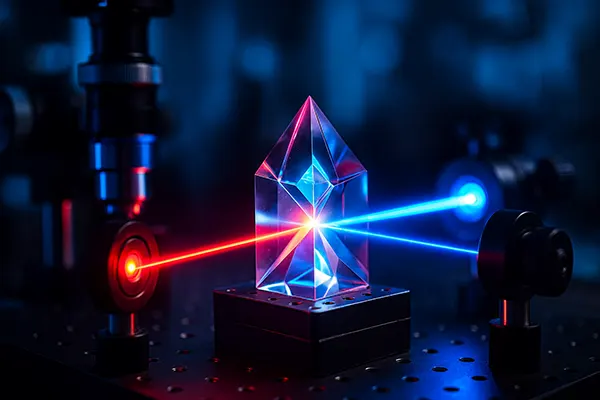Topological Materials in Nonlinear Optics: How They Transform Microlaser Systems

By 2025, topological materials have become one of the most fascinating fields in modern optics and condensed matter physics. Their ability to guide light in stable, defect-resistant modes has brought transformative changes to microlaser systems and nonlinear optical technologies. These materials are now enabling photonic devices that are smaller, more efficient, and far more robust than ever before.
The Role of Topological Materials in Photonics
Topological materials differ from conventional ones because their behaviour is determined by geometric properties rather than chemical composition. This allows energy or light to travel along the edges of a structure without scattering, even if defects or impurities exist. In photonics, this means unprecedented levels of reliability and control, opening possibilities for advanced light-based computing and communications.
Topological insulators, a key class of such materials, are insulators in their bulk but allow energy flow on their surfaces. This property makes them perfect for guiding photons through micro-structured pathways, reducing losses and maintaining coherence. These materials form the foundation for stable photonic circuits that can withstand environmental fluctuations and physical imperfections.
Furthermore, the combination of topological protection with optical design has allowed researchers to develop new waveguides and resonators that preserve light intensity over long distances. Such devices now play a major role in telecommunication networks and optical data processing systems worldwide.
Nonlinear Optical Phenomena in Topological Systems
Nonlinear optics studies how materials respond to intense light fields, where their reaction is no longer directly proportional to light intensity. When combined with the unique properties of topological materials, this leads to new and enhanced phenomena such as second-harmonic generation and frequency conversion. These effects enable more efficient laser sources and signal amplification.
Recent breakthroughs have demonstrated that topological photonic crystals can double the frequency of light with much higher efficiency than conventional materials. This advancement is critical for data transmission, biomedical imaging, and quantum communication. The geometry of topological states effectively channels light waves, minimising energy loss during nonlinear interactions.
Another exciting discovery is the formation of topological solitons — stable light pulses that can travel long distances without changing shape. This opens new possibilities for ultra-fast optical communications and high-precision measurement systems that rely on the stability of light signals.
Topological Microlasers and Their Advantages
Microlasers are compact light sources used in fields such as telecommunications, healthcare, and nanotechnology. When built using topological principles, these lasers gain new levels of stability and precision. Their emission remains stable even if parts of the device are physically damaged or experience interference, which is a key advantage for demanding environments like aerospace or medical imaging.
Topological microlasers generate light that circulates along the protected edges of a cavity, ensuring single-mode operation and consistent frequency output. This eliminates issues like mode competition and random noise that often affect traditional microlasers. As a result, topological microlasers offer cleaner spectra and higher efficiency while requiring less energy.
By 2025, research teams have already demonstrated prototypes of topological microlasers that maintain coherence under mechanical stress and temperature changes. These innovations are setting new standards for reliable optical communication and quantum device integration.
Challenges and Future Development
Despite these remarkable advances, scaling up the production of topological materials remains a challenge. Creating precise geometric structures on the nanoscale demands advanced manufacturing technologies, and maintaining topological protection under intense light remains a key research area. Scientists continue to explore new materials, such as topological semimetals, that may provide better performance for nonlinear optics.
Another challenge involves integrating these materials into existing photonic circuits without increasing cost or complexity. Researchers are developing hybrid systems that combine silicon photonics with topological insulators to achieve both scalability and topological protection. This hybrid approach could accelerate the commercial use of topological microlasers in the next few years.
Nonetheless, the potential of these systems is enormous. They could redefine how optical data is transmitted, processed, and stored, offering a new paradigm of light-based computation that surpasses current electronic limits.

The Future of Topological Photonics
The combination of topology and nonlinear optics is paving the way for a new generation of photonic technologies. These innovations promise not only greater energy efficiency but also longer lifetimes and lower maintenance requirements for optical systems. From quantum communication networks to biosensing, the applications are expanding rapidly.
By 2025, topological materials are being integrated into experimental optical processors and quantum circuits. Their resilience and precision make them essential for developing error-resistant systems in computing and telecommunications. This progress marks a significant step toward the era of fully optical computing, where photons replace electrons as the main carriers of information.
Ultimately, topological materials represent the next frontier in nonlinear optics. They embody the fusion of theoretical elegance and practical application — a rare synergy that continues to push the boundaries of what light-based technology can achieve.
Towards a New Age of Optical Innovation
The emergence of topological materials in nonlinear optics signals a profound technological transformation. Microlasers built on these principles not only redefine laser performance but also inspire entirely new classes of photonic devices. Their robustness, scalability, and efficiency make them indispensable for the technologies shaping the modern world.
These developments bring scientists closer to realising optical systems that are self-stabilising, adaptable, and sustainable. In the next decade, topological photonics will likely become the foundation for smart optical infrastructure that powers data centres, medical devices, and global communications.
As research continues, the intersection of topology and light will remain a key driver of scientific progress — a testament to the endless possibilities of human ingenuity in mastering the physics of light.


